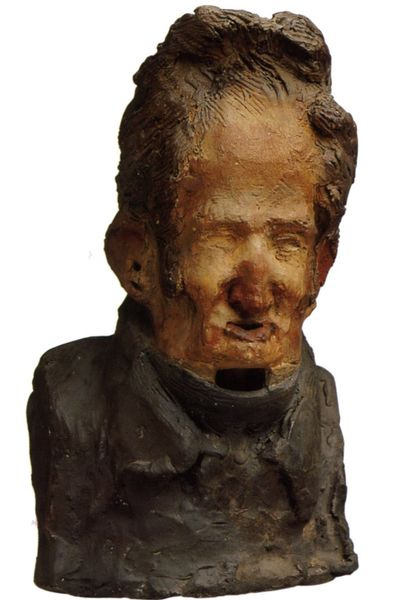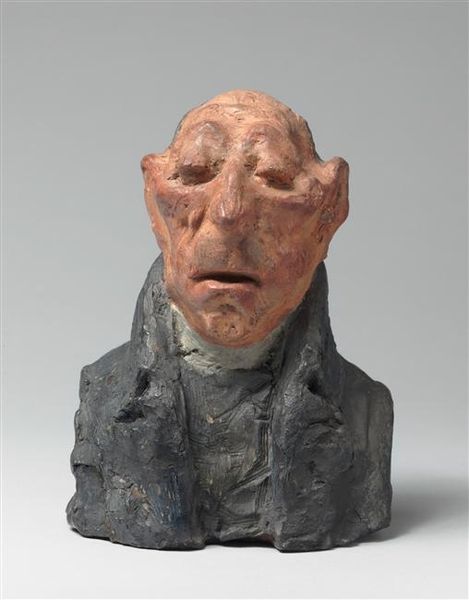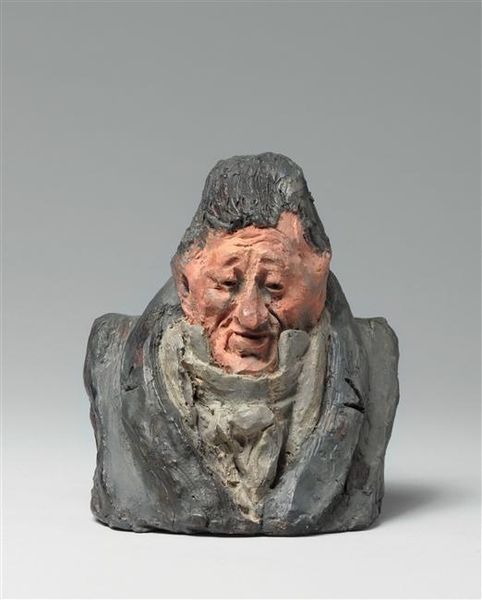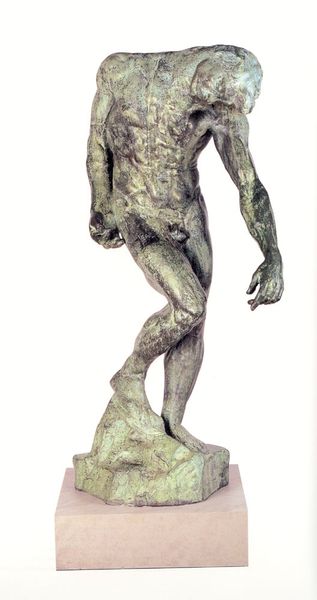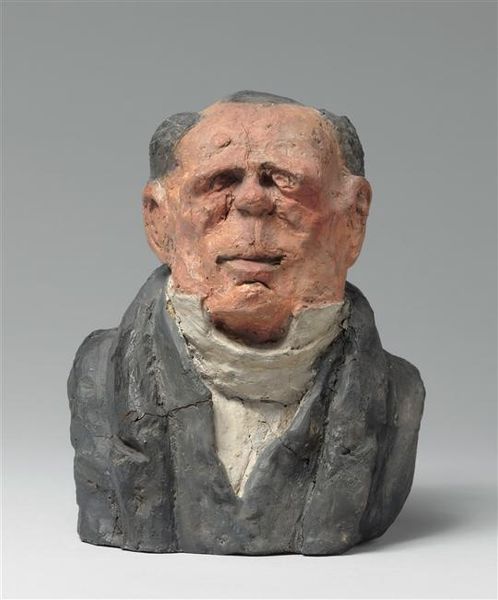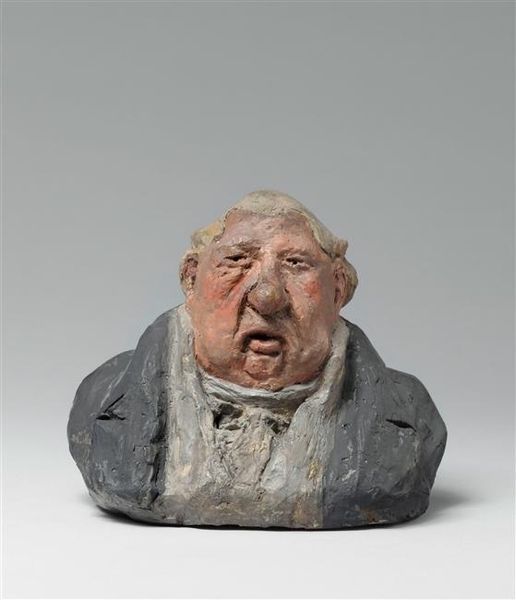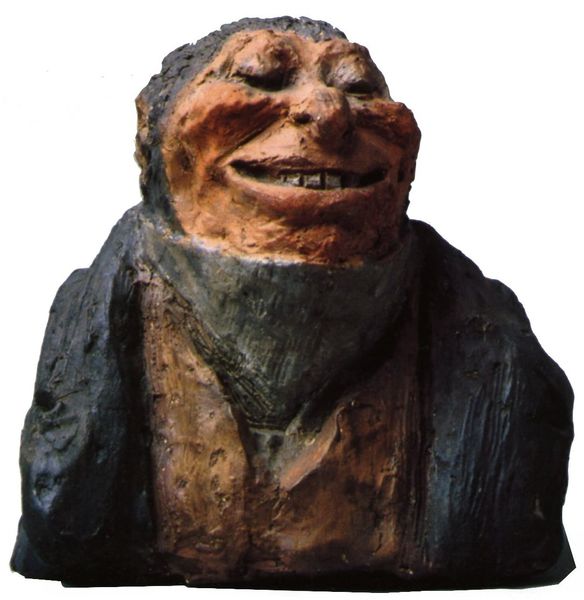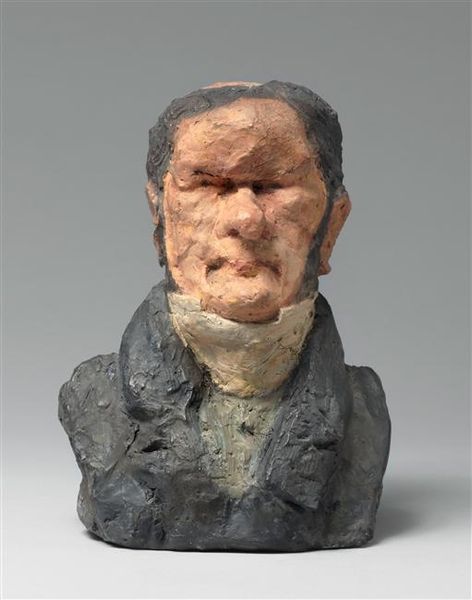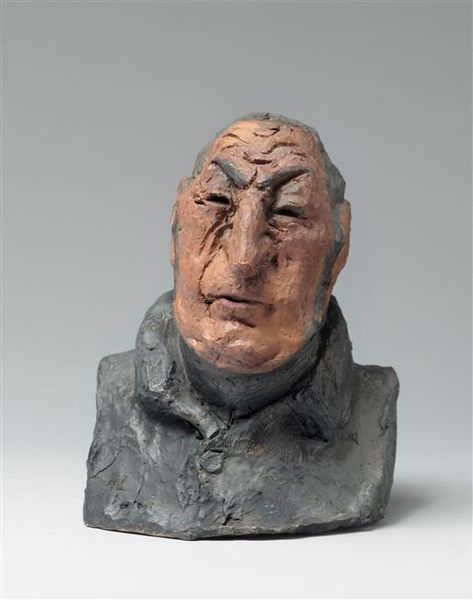
Charles Philipon (1800-1861), Journalist and Director of the Magazines Caricature and Charivari 1833
0:00
0:00
ceramic, sculpture
#
portrait
#
statue
#
16_19th-century
#
sculpture
#
ceramic
#
charcoal drawing
#
sculpture
#
realism
#
statue
Copyright: Public domain
Editor: Here we have Honoré Daumier's sculpture of Charles Philipon, a journalist, made around 1833. It's striking how textured the ceramic is. What I find most interesting is the subject - you wouldn't necessarily expect to see a sculpture of a journalist from this period. What do you see in this piece? Curator: I see Daumier engaging directly with the political landscape of his time. Consider the materiality: ceramic, not marble or bronze – traditionally 'high art' materials. This choice democratizes the medium, suggesting that even the figures of journalism, of public discourse, are worthy of artistic representation. How do you think this specific choice affects its reception? Editor: That's a great point. I hadn't thought about the implications of the material itself. It makes me think about the accessibility of journalism, of information, maybe? Curator: Precisely. Daumier, himself a printmaker, likely saw parallels between the rapid reproduction of printed material and the potential for ceramic multiples. This bust wasn’t just a portrait; it was a commentary on the rising power of the press, a reflection on the machinery of public opinion and how it challenges previous ways of communication. What’s more, consider this: How does the very act of sculpting a journalist alter the traditional role of art, historically used to celebrate aristocrats? Editor: It really makes you think about who gets remembered and how. Before, I was seeing this as just a portrait, now I'm starting to understand the cultural statement that is implied through the medium itself and how that statement breaks traditional barriers. Curator: And by challenging those boundaries, Daumier transforms the narrative of who holds power. The figure wasn’t necessarily the subject, but rather a consequence of this shifting culture driven by new tools. It is clear, tangible, and challenging to hierarchies of power. Editor: It's fascinating how the materials themselves are so central to the meaning here. I learned to appreciate more of its historical context today!
Comments
No comments
Be the first to comment and join the conversation on the ultimate creative platform.
